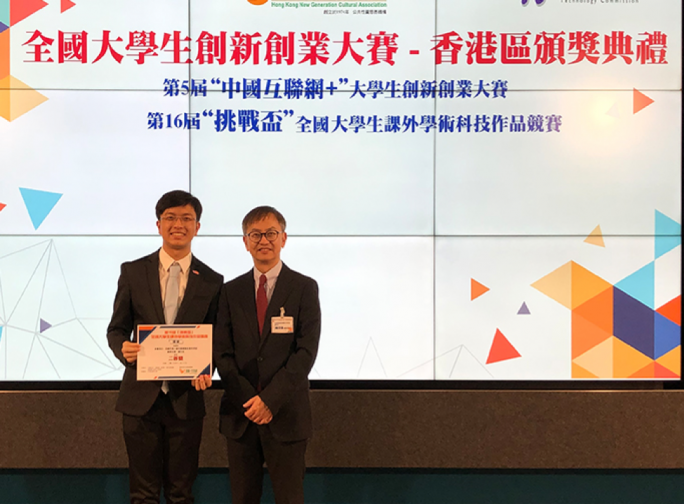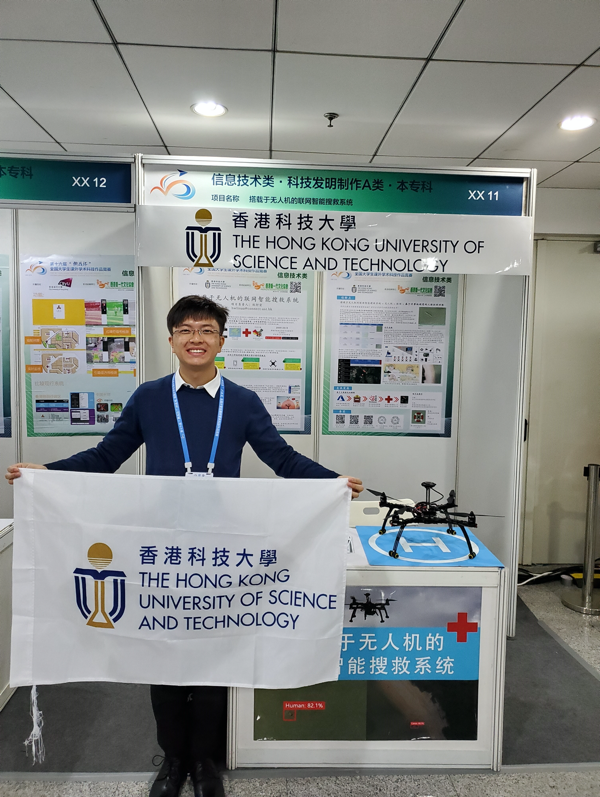

Congratulations to the project “Intelligent search and rescue system equipped with drones” leaded by LIN Hin Wang, a year-3 HKUST student studying BEng in Computer Engineering, for being awarded as “信息技術類 二等獎” in the National Challenge Cup 2019 (第16屆 “挑戰盃” 全國大學生課外學術科技作品競賽) in Nov 2019.
The team was selected to represent HKSAR and HKUST to join the national competition competed with many brilliant teams who came from different cities in China.
With the innovative idea and outstanding performance in the competition, Hin Wang received recognition and valuable comments from the Selection Panel and audience to further polish his project ideas. “As well all know, Hong Kong students are pioneering, flexible, and self-improving. HKUST students are creative and curious. Have you ever come up with a great idea but never had the chance to put it into practice? From breakthroughs in military technology to inventions that bring convenience to our daily life, all concepts and ideas are welcomed by this competition. I encourage everyone to participate in different competitions. Not only allowing yourself to bring your imaginations to life, you can also take the opportunity to enlarge your vision and observe other participants' projects, reports, and research processes and find more inspiration.” shared by Hin Wang to HKUST students.
Intelligent search and rescue system equipped with drones is a computer vision-based human body recognition function for searching missing persons. Execution on TensorFlow and OpenCV for human recognition is to compare the similarities of each pre-identified object in its database. If the similarity is equal to or higher than 75%, it will send the location and the image to the Search and Rescue Team to judge whether the object in the image is a person, a canoe, a life jacket or a backpack. If the above are met the object, the drone suspends the cruise and lowers the flight altitude for further confirmation. If the infrared thermal imaging sensor does not detect the heat source reaction, the system assumes that the rescuer is in critical condition, such as hypothermia or has sunk into the water, and is classified as a primary alert. If infrared thermal imaging sensor detects reacted to the heat source and listed as a secondary alarm. If it is found to be marine litter after further confirmation, no alert will be issued.
However, the human body recognition function is not completely reliable. At the same time as the alarm is issued, the system will also attach a screenshot, and the final decision will be given to the rescue personnel.

